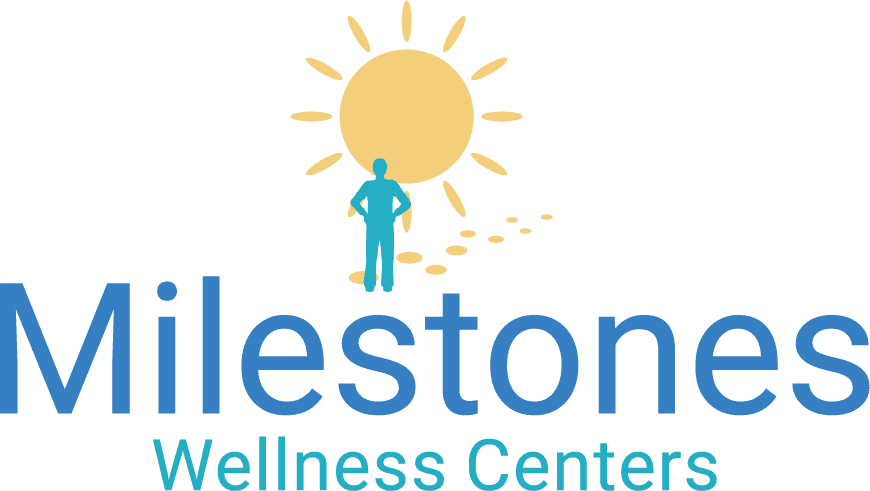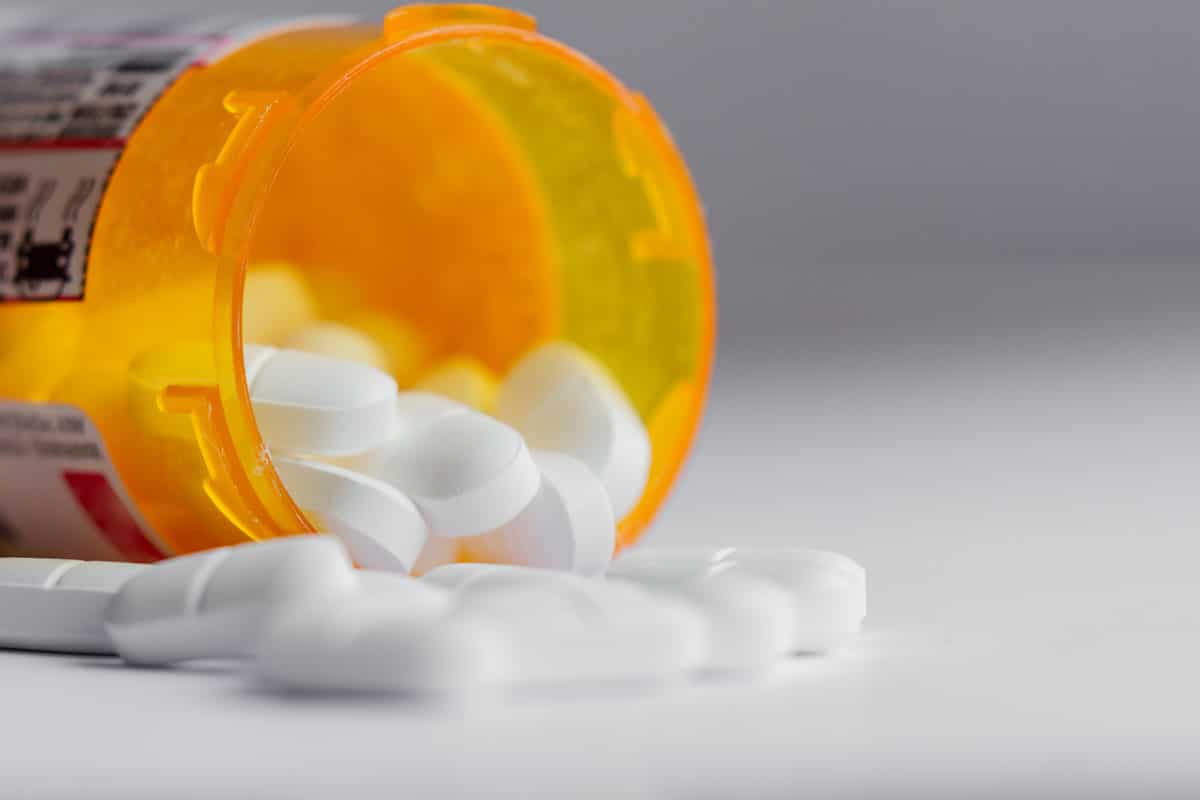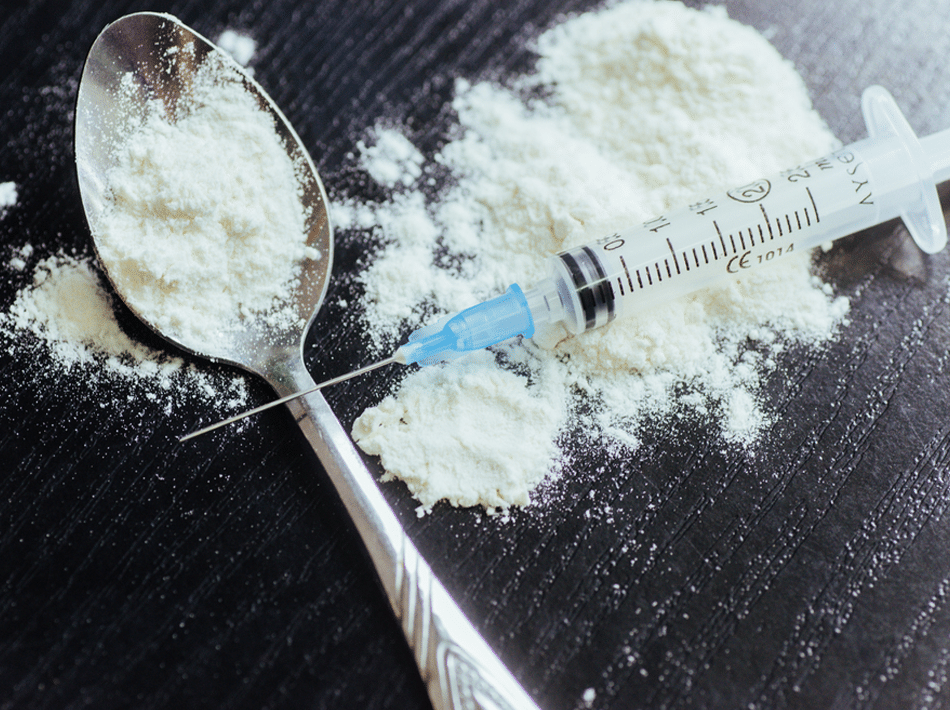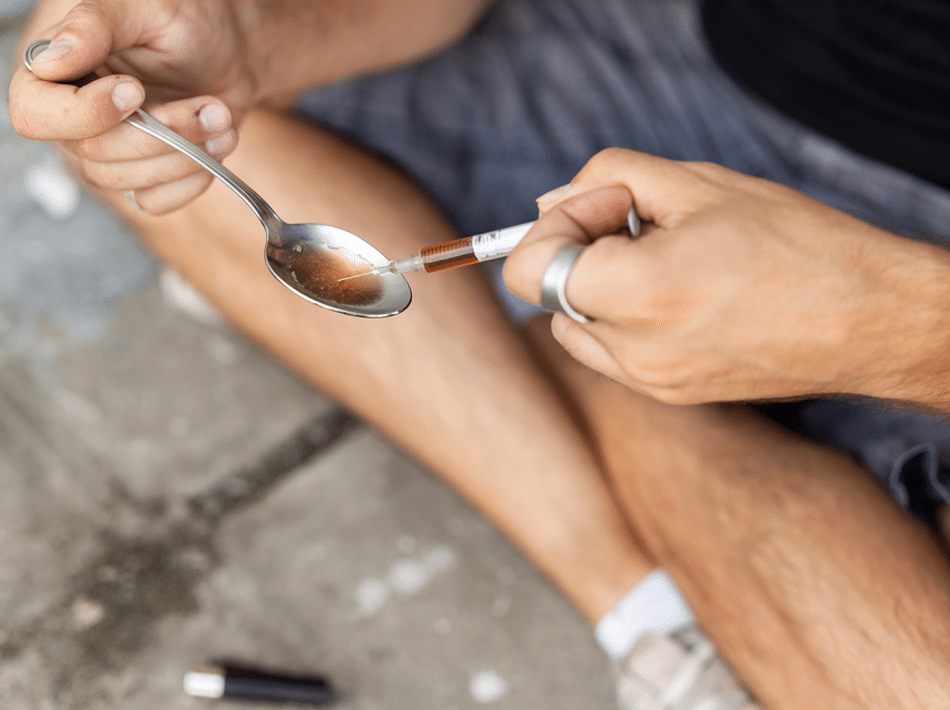Suboxone is the brand name of a medication for the treatment of Opioid Use Disorder. Most people associate the treatment with the brand name of the medication, but what people are thinking of is the active ingredient Buprenorphine. The active ingredient Buprenorphine comes in many medications, and delivery methods, and is best paired with Naloxone.
What is Suboxone?
Suboxone is a medication that has Buprenorphine. It also includes the active ingredient of Naloxone which assists in preventing any current usage and accidental overdoses on opioids and opiates. In the United States, Buprenorphine (Suboxone) was first approved by the Food and Drug Administration (FDA) for use in the treatment of Opioid Use Disorder on October 8, 2002.
Buprenorphine works as an opioid partial agonist. This is different than that of Methadone, another commonly used medication for the treatment of Opioid Use Disorder. Methadone is a full opioid agonist. There are many differences between a partial and a full opioid agonist.
Partial opioid agonists bind to the cells’ opioid receptor sites but do not produce the full effect that the full agonist opioids will produce. So, what does this mean? This means that Buprenorphine will assist in reducing cravings and the effects of withdrawal associated with opioids. It also means that there is a “ceiling effect” with a partial agonist and that after a certain dosage of the medication, there are no additional effects. This is extremely helpful in addiction treatment and provides a safeguard against the medication being abused.
Also, with a partial opioid agonist, there is less physical dependency on medication such as that with Methadone. To give an example, Methadone as mentioned is a full opioid agonist, while other full opioid agonists are Fentanyl, Heroin, and Morphine. Buprenorphine has a greatly decreased chance of misuse over that of full opioid agonists.
Suboxone is a combination of Buprenorphine and Naloxone, which is the preferred medication for the treatment of Opioid Use Disorder as it is a partial opioid agonist and an antagonist. Naloxone is the opioid antagonist part of the medication. This means that the Naloxone attaches to the opioid receptor sites but will either reverse or block the effects of other opioids and opiates.
This is why Suboxone (Buprenorphine and Naloxone combination) is preferred for treatment. The Buprenorphine first will work to assist with cravings and withdrawal, while the Naloxone will prevent the misuse of other opioids and opiates. This medication is great for assisting in the prevention of overdoses while a person is working on their substance abuse recovery. Naloxone has assisted in the prevention of both fatal and nonfatal overdoses with great success.
The main use of Suboxone is for the treatment of Opioid Use Disorder. It is used to assist someone who is physically and/or psychologically addicted to opioids and/or opiates to get off of those drugs without issues with cravings and withdrawal. Buprenorphine was originally created in the 1970s as a safer alternative to pain medication.
Buprenorphine has since been used as a type of pain medication and it was in 2002 when it was deemed as a safe and effective treatment for Opioid Use Disorder by the FDA. Buprenorphine is best used when combined with the medication Naloxone such as in the brand medication named Suboxone.
Suboxone has a role in the treatment of Opioid Use Disorder with Medication Assisted Treatment (MAT), which is now called Medications for Opioid Use Disorder (MOUD) treatment. Suboxone is used to assist the individual with alleviating the effects of both withdrawal and cravings. It is highly recommended that the person in this type of treatment also seek addiction counseling to pair with the medication as this will have the highest chance of success.
As Buprenorphine can assist with the physical components of substance abuse recovery, many other psychological factors need to be addressed at the same time to increase the chance of successful and sustained recovery.
Benefits and Effectiveness of Suboxone
There are many benefits to Suboxone or Buprenorphine treatment. One of the first benefits is that Suboxone or Buprenorphine is less habit-forming than the other medication Methadone due to Buprenorphine being a partial opioid agonist. The main use of Suboxone or Buprenorphine is also the main benefit of this medication. This benefit is that it will alleviate your withdrawal symptoms and assist in decreasing or eliminating the physical cravings for opioids and opiates. With Suboxone which is the combination of Buprenorphine and Naloxone, the Naloxone assists as an assisted safeguard for relapse and overdoses.
As Suboxone does act as an antagonist of the kappa and delta opioid receptor sites, research has shown that Buprenorphine can have antidepressant effects. This means that during the treatment the use of this medication can help with some symptoms of depression, even though this is not the intended use of the medication. If you are suffering from depression, it is highly recommended that you seek psychiatric assistance and medications specific to depression.
The role of Suboxone in the treatment of Opioid Use Disorder is to treat the physical symptoms of withdrawal and cravings. As mentioned earlier, this is just one aspect of treatment, and the combination with psychological services such as counseling is also recommended.
Suboxone will allow you to safely avoid the discomforts of withdrawal while you work on your recovery. Also, while on Suboxone you can taper down off the medication in a controlled and medically monitored method, unlike that of other opioids and opiates purchased on the streets. Avoiding cravings while on Suboxone will assist in recovery as well. However, psychological triggers may persist, which counseling can greatly assist with.
The National Institute on Drug Abuse reported in 2021 that research has proven that the usage of Buprenorphine or Suboxone for the treatment of Opioid Use Disorder is effective. The research that has been reviewed shows that patients who use Buprenorphine or Suboxone are 1.82 times more likely to stay in treatment than those attempting treatment without the assistance of any medication.
During the studies reviewed, it was noticed that there was a statistically significant increase in the opioid-negative drug tests by those in the studies who were taking Buprenorphine/Suboxone. This shows adherence to recovery and sobriety with the assistance of Buprenorphine/Suboxone.
In a Swedish study of patients in Suboxone or Buprenorphine treatment, when comparing those on the medication versus those on the placebo (a placebo is a false medication with no active properties, but the patient is not aware of the medication being fake), those on the placebo had 100 percent failure in treatment where those on the Buprenorphine had a success rate of 75 percent.
This shows great success with Buprenorphine or Suboxone, even over that of Methadone which typically yields a success rate of around 67 percent, in the respective studies mentioned in the article by The National Institute on Drug Abuse. It is important to note here that there is greatly more research on Methadone than on Buprenorphine or Suboxone. Methadone has been used in treatment since 1947 compared to 2002 for Buprenorphine medications such as Suboxone, Sublocade, Subutex, Zubsolv, and Bunavail.
Another medication that is used to treat Opioid Use Disorder is Naltrexone. As this is also a great medication and has helped many individuals in treatment, there is one main difference between it and Buprenorphine or Suboxone. The main difference is that Naltrexone requires the patient to be in full detoxification which limits the chances many individuals would make it to this point to start the treatment.
As of 2021, there was not sufficient evidence to support the effectiveness of the oral version of Naltrexone but there was sufficient evidence to support the injectable version. Comparing Buprenorphine/Suboxone and Naltrexone effectiveness on continued treatment recovery, data shows similar success rates that support both as a means of treatment for Opioid Use Disorder.
One of the biggest benefits of Suboxone is the addition of Naloxone with Buprenorphine. In a research article by Harvard Health in 2021, they reported that the use of Suboxone has been shown to lower the risk of fatal overdoses by 50 percent. The addition of Naloxone also greatly reduces the risk of nonfatal overdoses, which are still medically dangerous and physically traumatic. Therefore, the use of Buprenorphine with Naloxone (Suboxone) is the preferred method of treatment in the realm of Buprenorphine Medications for Opioid Use Disorder (MOUD) treatments
Administration and Dosage
Suboxone treatment is largely associated with a brand name of medication for the treatment of Opioid Use Disorder. However, the treatment is true with the active medication Buprenorphine. Suboxone is just one of the manufacturers of medications containing Buprenorphine, in which the brand Suboxone also includes the useful medication Naloxone along with Buprenorphine.
When discussing medication administration, this blog will largely go over the most common usage of this treatment, which is oral consumption. It is important to note that there is an injectable version of Buprenorphine treatment called Sublocade. This version is delivered into the abdominal region via an injection by a nurse or qualified individual. Each injection lasts 30 days which prevents the need to take medication daily. Due to the expense associated with Sublocade, it can be harder to find offices that can offer such a treatment.
The induction process for Suboxone is rather simple and the effects of the medication are almost instant. Suboxone does contain Naloxone, which then requires that the patient is in a state of withdrawal before starting the medication. The reason for this is that Naloxone can cause a precipitated opioid withdrawal if the medication is administered while a mu-opioid receptor agonist remains in a person’s system.
What this means is that the individual starting Suboxone treatment needs to have the opioid and/or opiates out of their system before starting (called induction) Suboxone treatment. The timing of this varies depending on the person and the substance(s) used.
There are some general rules that we use to help patients know how long they need to wait before induction on Suboxone. Those using more short-acting opioids and opiates such as Percocet, Vicodin, and Heroin usually need between 12 and 24 hours from the last usage before starting Suboxone.
Those using long-acting opioids and opiates, such as Morphine, Methadone, and Oxycontin will require 36 or more hours. For Methadone, the individuals will want to wait more than 48 hours. It is important to note here that going into a precipitated withdrawal is often more severe in symptoms than normal withdrawal. Therefore, it is very important that during the induction and start of Suboxone, you follow the recommended timing of starting the medication.
The dosage and timing of medication can vary depending on the individual. Many individuals may start on a higher dosage of Suboxone (Buprenorphine) due to their longer period of active addiction. Someone who experienced only a small and short-lived relapse may start on a lower dosage. Do remember it is always best to be on the lower dosage of this medication as much as possible, as the goal should be an eventual cessation of Buprenorphine. Therefore, the lower dosage you start on the easier and quicker it is to titrate off the medication when it comes time.
The maximum dosage listed by the manufacturer is 24 mg a day. As that is what is reported by the pharmaceutical manufacturer, research shows that lower dosages are suitable and there is not much value in doses over 16 mg a day. A dosage of 16 mg a day has been shown to affect slightly over 98 percent of the mu-opioid receptor sites in the brain.
Dosages higher than 16 mg a day have only been shown to increase that coverage by small fractions of a percent. This demonstrates that 16 mg a day is an effective dosage and anything about that would only be easing any psychological addiction and have no true physical effects.
When considering the psychological aspects of addiction, there are times that this association can appear as perceived physiological effects. The concept here is a psychosomatic response, which is when bodily symptoms are caused by emotional or mental disturbances. This can also relate to the timing of dosing.
Most of the time with higher doses of Suboxone, the individual is directed to take half in the morning and half in the afternoon. Splitting the medication this way is not completely necessary. With an average half-life of 38 hours, the medication is fine to take just one time a day. Some individuals may metabolize the medication differently causing more of a need for having the medication in split doses.
One way of looking at the medication is to break the cycle associated with addiction and need to take a substance multiple times a day. This can be a problem for some when starting to take just once a day. It is the psychosomatic response to addiction that will cause a perceived change in the person later in the day, despite the medication still doing what it is meant to.
Potential Side Effects of Suboxone
Suboxone, as with any medication has many known side effects, both common and uncommon. The most commonly reported side effects of Suboxone are constipation, headache, diarrhea, and nausea. The manufacturer also lists these as common side effects:
- Drowsiness
- Blurry Vision
- Irregular Heartbeat
- Concentration Problems
- Insomnia
- Sweating
- Number mouth
- Painful Tongue
- Dizziness and fainting
- Constipation
- Nausea and vomiting
- Headache
The main serious side effect that is reported with Buprenorphine or Suboxone is respiratory depression, which is common in any type of opioid. This is when your rate of breathing is too slow and/or shallow and causes a lack of oxygen in your body.
Another potential side effect of Suboxone or Buprenorphine is related specifically to the brand Suboxone and only concerning the film version of the medication. This side effect, it is important to note that this is still being investigated as of the date this blog is published. What is being investigated is that the film version of Suboxone can cause tooth decay in patients. This may take a long time to come to fruition as there is a class action lawsuit in the process of being built reading this concern.
If you have any concerns over this medication and this side effect, it is important that you research and contact the lawyers handling the case. Also, you can change to the tablet form of the medication, which is not being reported to have this side effect.
Misconceptions About Suboxone
There are many myths about Suboxone or Buprenorphine treatment. Here we will go over the main myths and explain the truth about them.
Myth: Suboxone or Buprenorphine is just trading one addiction for another.
Truth: Taking Suboxone or Buprenorphine as a prescribed medication to manage a chronic illness (Opioid Use Disorder) does not meet the definition of a Substance Use Disorder.
Myth: Counseling or outpatient therapy is a requirement to see clinical improvement.
Truth: Outpatient therapy or counseling is often greatly beneficial to patients, but it is not mandatory. The Drug Addiction Treatment Act of 2000 only requires those prescribing Buprenorphine to have the ability to refer patients for behavioral health services, such as counseling, if the need is identified.
Myth: Treatment with Buprenorphine (Suboxone) is burdensome and time-consuming.
Truth: Intensive treatment is not required to receive Buprenorphine or Suboxone. As some may require this level of treatment at first or after any relapses, most treatment is simple office visits. This can be done via telehealth or telemedicine.
Myth: Patients are just getting “high” on Suboxone or Buprenorphine.
Truth: Buprenorphine or Suboxone will not cause any intoxication in individuals who are opioid dependent, because it is a partial opioid agonist. Individuals who are not opioid dependent can become intoxicated, but these people are not being prescribed Buprenorphine as they are not diagnosed with Opioid Use Disorder.
Myth: Patients only get Suboxone or Buprenorphine so they can sell the medication on the streets.
Truth: Diversion and misuse of medications exist with every type of medication. Some research has noticed a similar diversion of Buprenorphine as with antibiotics. Clinics do watch closely for concerns of diversion and should be performing random pill counts and drug testing. Drug testing should not only look for illicit substances but should check to ensure the patient is taking their prescribed medication of Buprenorphine.
Myth: You are not truly in recovery if you are also taking Suboxone or Buprenorphine.
Truth: This is false. Recovery does not require total abstinence from opioids. Recovery is a period of improved quality of life that allows for medications for the management of any chronic disease such as Opioid Use Disorder and with Buprenorphine.
Myth: Buprenorphine or Suboxone is frequently misused, therefore prescribers should strictly control access.
Truth: Any medication can be misused, not just Buprenorphine. Also, Buprenorphine is not a preferred substance for individuals to get “high” from due to it being a partial opioid, which limits any potential for euphoria.
Most commonly, Buprenorphine or Suboxone misuse is associated with self-treatment of opioid and opiate withdrawal. Usually for individuals without access to the treatment of Medication for Opioid Use Disorder (MOUD), previously known as Medication Assisted Treatment (MAT).
Clarifying the Role of Suboxone
The role of Suboxone or Buprenorphine is mainly to treat Opioid Use Disorder. Suboxone is used in the treatment of withdrawal symptoms and cravings for opiates and opioids. Buprenorphine, which is the main active ingredient in Suboxone, can be used to treat Opioid Use Disorder in adults and children over the age of 15.
There are times in which Suboxone will be used in pain management for patients, but there are important differences here. Suboxone is not approved by the U.S. Food and Drug Administration (FDA) to treat anything other than Opioid Use Disorder. Some physicians may write Suboxone as an “off-label” treatment for pain management for individuals who have both pain management needs while having problems with addiction.
The Buprenorphine single-agent medication is the only one that has received FDA approval for pain management. It is also important to know that any medical facility providing Medications for Opioid Use Disorder (MOUD) is not to assist in pain management, those are two separate clinic specialties and need to be treated as such. If a person needs assistance with pain management they need to seek out a pain management facility for that treatment, not a treatment facility for Substance Use Disorder.
Safety and Precautions
Suboxone and pregnancy are common concerns with treatment facilities for Medications for Opioid Use Disorder. Before starting to discuss this topic there is some important data to learn. Opioid and opiate-related deaths in women who are pregnant and the postpartum period 12 months after delivery is now one of the leading causes of pregnancy-associated deaths.
Between 2010 and 2017 the number of women with opioid-related diagnoses at the time of delivery increased 131%. When looking at individuals suffering from Opioid Use Disorder while pregnant it is preferred that those individuals seek some form of Medication for Opioid Use Disorder. The reason for why this is preferred is that it greatly decreases the risk of overdose which will improve both the mother and child’s outcomes. Continued opioid and opiate usage during pregnancy has been linked with premature birth, poor fetal growth, birth defects, stillbirth, and neonatal abstinence syndrome.
Because of the dangers of continued opioid and/or opiate usage during pregnancy, it is recommended for pregnant women to change to an assisted medication such as Suboxone, Buprenorphine, or Methadone. It is recommended that Suboxone or Buprenorphine is used due to the lower risk profile when looking at neonatal opioid withdrawal syndrome when compared to Methadone.
Suboxone is a brand of Buprenorphine which also contains Naloxone. In previous years, people thought Naloxone to be dangerous for pregnant women. More recent research has proven Naloxone to not be dangerous for women during pregnancy or breastfeeding. Research has shown that if Naloxone does get into the breastmilk, it is likely the baby would not be able to absorb the Naloxone very well, if at all, from their stomach.
Do understand that this is different than being treated with Naloxone, such as Narcan, for an overdose during pregnancy. What research was investigating was the consumption of Naloxone in the medication Suboxone. Please note that this is based on current literature and you should discuss any concerns and medications with your medical provider to assist you in making the best decision during a pregnancy and the year after. This blog is not intended to be used as medical advice, just informative of current literature.
There are some important interactions you should be aware of when taking Suboxone or Buprenorphine. The first and most concerning medication combination is Benzodiazepines. Both Suboxone or stand-alone Buprenorphine and Benzodiazepines depress the central nervous system. When combined they can cause severe impairment, unconsciousness, comas, or respiratory failure, which could lead to a fatality.
If an individual needs both medications it is possible to take them in a controlled environment with close monitoring by a medical provider but should be avoided if possible. There are no other currently known major medication interactions with Suboxone or Buprenorphine, but there are other substances and foods that can have negative effects if combined.
First, it is advised that anyone on Suboxone or Buprenorphine avoid grapefruit, grapefruit juice, and grapefruit-based products. There are many medications in which grapefruit and grapefruit-based products can have adverse side effects. Grapefruit is a strong CYP3A4 inhibitor, in which the metabolism of Buprenorphine (an active ingredient in Suboxone) is mediated by CYP3A4. Therefore, the consumption of grapefruit and grapefruit-based products could have prolonged and delayed effects of Buprenorphine.
Alcohol should be avoided as there can be severe interactions with Suboxone or Buprenorphine, including death. Alcohol is a depressant and when mixed with Suboxone (Buprenorphine) can increase the depression of the central nervous system. Some of the effects that can be caused from mixing Suboxone (Buprenorphine), and alcohol can include deep sedation, slowed breathing, coma, low blood pressure, and possibly death.
Drug testing is a common practice of any treatment for substance use disorders, including Medications for Opioid Use Disorder (MOUD) with Suboxone and Buprenorphine. Many individuals in treatment view such testing as punitive and that the facility is trying to catch them.
There are many beneficial reasons for drug testing, which are to assist in the safety of the patient and to prevent misuse and diversion of Suboxone or Buprenorphine. One reason drug testing is performed is to check for the usage of any other substances while in treatment. The usage of cocaine has been seen to lower the effectiveness of Buprenorphine and can lead to an eventual polysubstance addiction.
Drug testing is also used as confirmation that patients are taking their medication as prescribed. When medications are sold to other individuals that is called diversion of medication and causes multiple problems. First, anyone taking a medication not prescribed by a physician, especially a controlled substance such as that of Suboxone or Buprenorphine, is illegal. There are also considerable risks of taking medications without an evaluation by a medical provider such as the interactions listed previously with other substances, medications, and foods.
Taking Suboxone which contains Naloxone while in active opioid or opiate addiction can cause a precipitated withdrawal for the individual. Another concern with the diversion of this medication is the problems it can place on those who are truly seeking recovery from Opioid Use Disorder from a needed medication.
The Drug Enforcement Administration (DEA) has an entire Diversion Control Division which is specifically tasked with detecting, preventing, and investigating the diversion of any controlled pharmaceutical medications from their lawful purpose into illicit drug trafficking. When individuals divert their controlled medications, it causes it to get harder for those seeking the medications for legitimate needs to obtain.
This is a major concern with Suboxone and Buprenorphine and has caused both treatment facilities and pharmacies to enforce rules and regulations which make obtaining the medications much more difficult for everyone, just to assist with the DEA requirements on diversion. If diversion was to cease to exist, then this would open up more treatment options and the attainment of a lifesaving medication would be more readily available.
In more recent years, it is common to find other substances mixed into illegal drugs that many users are unaware of. Some of these drugs are Fentanyl and Xylazine which are greatly increasing in being mixed into a variety of “street” drugs. Even some “street” pharmaceutical drugs such as Vicodin and Percocet are not as they appear. They are sometimes just pressed with Fentanyl, which in very low doses may appear to have the same effect on the user.
The problem with pressed Fentanyl is this is not a controlled production, and one pill could easily have a greatly increased amount of Fentanyl and cause an individual to overdose. Xylazine is rarely a desired substance of abuse as it is a non-opioid veterinary tranquilizer, now called tranq. Because it can produce intoxicating effects, it has lately been seen mixed with Fentanyl to produce a more intense “high”. A large problem is that Xylazine is not a Narcan reactant and is leading to an increase in unintentional fatal overdoses.
Drug testing at treatment centers can assist in allowing patients who have relapsed to understand the substances they digested, many of which are unknown to the individual. It does require a higher level of testing, such as the ones performed at Milestones Wellness Centers to be able to detect the exact substances in a person’s system. A simple urine test which is not sent for confirmatory results at a laboratory can give some basic information on substances used but will not give exact information.
If you or someone you know is struggling with opioid addiction, Suboxone treatment may be the right choice. Contact us today to learn more about how our treatment programs can assist in recovery and help pave the way to a healthier, drug-free life. Don’t wait—take the first step towards recovery now.





